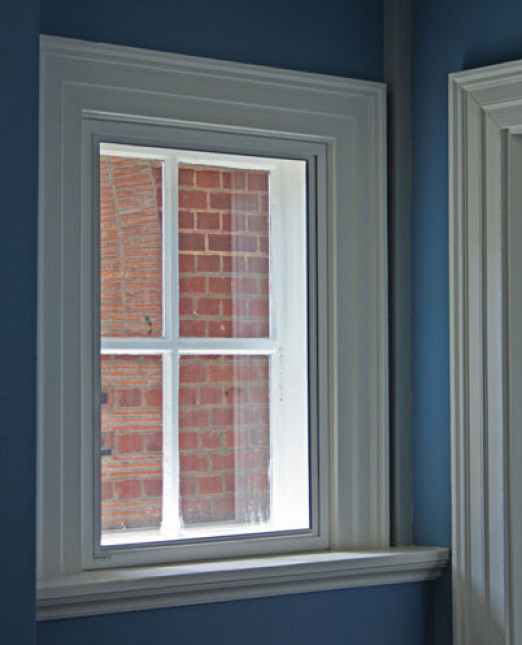Windows are an important architectural element of many traditional libraries but being single glazed they provide minimal thermal insulation and poor acoustics. Due to technological and design advances in recent years, Secondary Glazing now provides an attractive and practical solution to these issues, particularly for Listed buildings.
A secondary window is a reversible adaptation and with sensitive design it can provide a sympathetic addition to any building. This will offer far more significant noise insulation than standard double glazed units and the use of thermally efficient glass will reduce heat loss by more than half, and so meet insulation levels set out in Part L of the Building Regulations. Security of collections is also becoming more important and secondary glazing accredited to Secured by Design or to Loss Prevention standards will provide a significant but discrete barrier.
In addition to facilities within the education sector, there are in excess of 4,000 public libraries in the UK. The Government backed Museums, Libraries and Archives Council (MLA) works tirelessly to ensure that public libraries throughout England can continue to make a measurable and substantial contribution to local economies, helping to bridge social divides and enrich lives, with a remit to “promote best practice, inspire innovative, integrated and sustainable services to all.”
Selectaglaze, the UK’s leading secondary glazing specialist, is playing an important role in preserving our architectural heritage and four libraries have recently benefited greatly from the introduction of Secondary Glazing to enhance energy efficiency and improve noise insulation.
Enfield Town’s Library was officially re-opened this spring by Sir Andrew Motion, former poet laureate and Chair of the MLA. This newly renovated flagship library has been the focus of a £5m refurbishment programme, which has seen the introduction of a teenage area, a café and enhanced computer facilities in addition to the existing traditional adult and children’s services.
The development featured the addition of an impressive glass and steel frontage and the combined new and old sections of the library now use renewable energy sourced from 100 metres below the ground with bore holes cut into the walls to cool it in the summer.
Selectaglaze’s challenge was to help bring the original 1912 building up to today’s demanding standards of thermal and noise insulation while maintaining the Listed character of its Edwardian façade. To achieve this, Selectaglaze treated a total of 27 sash windows with a combination of vertical sliding counter-balanced units and Lift-Out units, thus enhancing the building’s green credentials and at the same time keeping the noise of the town traffic at bay.
Clapton Library is a Grade II listed Edwardian neo-classical Library which has been restored to its former glory, retaining and uncovering many of its original features, while updating its facilities with a striking new extension.
Sustainability has been at the heart of the refurbishment, with energy efficient green technologies being utilised throughout the project. These include rain water harvesting; solar water heating and energy efficient lighting and heating systems. The existing windows have been upgraded in an unobtrusive manner using hinged casements linked to Series 30 Lift-Out panels to match the window sight lines.
Ramsgate Library rose Phoenix-like from the ashes five years after fire gutted the 104 year old Grade II landmark building on the Kent coast.
The impressive two-storey north façade escaped the ravages of the flames and, along with the west façade, were the only principal elevations of the original building to have survived. Single glazed timber sash windows were specified to these facades, some of which were salvaged from the fire. However, to meet modern standards of thermal insulation and energy efficiency, Selectaglaze was called upon to design a sympathetic secondary glazing system. This involved a diverse range of styles including hinged casements with curved heads that exactly matched the external window design.
Seeley Library at Cambridge University was designed by James Stirling. Completed in 1968, the library won an R.I.B.A Gold Medal in 1970 and has been listed by English Heritage.
The building features an intricate angled glass structure creating a light and airy library with a partial glass roof overlooked by numerous meeting rooms, some of which are cantilevered with viewing galleries looking out across the Library.
To afford students total peace and quiet the meeting rooms have been provided with secondary glazing but one room presented a significant challenge due to the many and varied shapes and angles used to create the viewing gallery. The existing glazing is a complex patent glazing roof construction with opposing pitches and multiple hips. The secondary glazing needed to run parallel and Selectaglaze used digital 3D mapping and modelling to perfect a solution that maintained the existing sight lines. The final result is both efficient and aesthetically pleasing.
